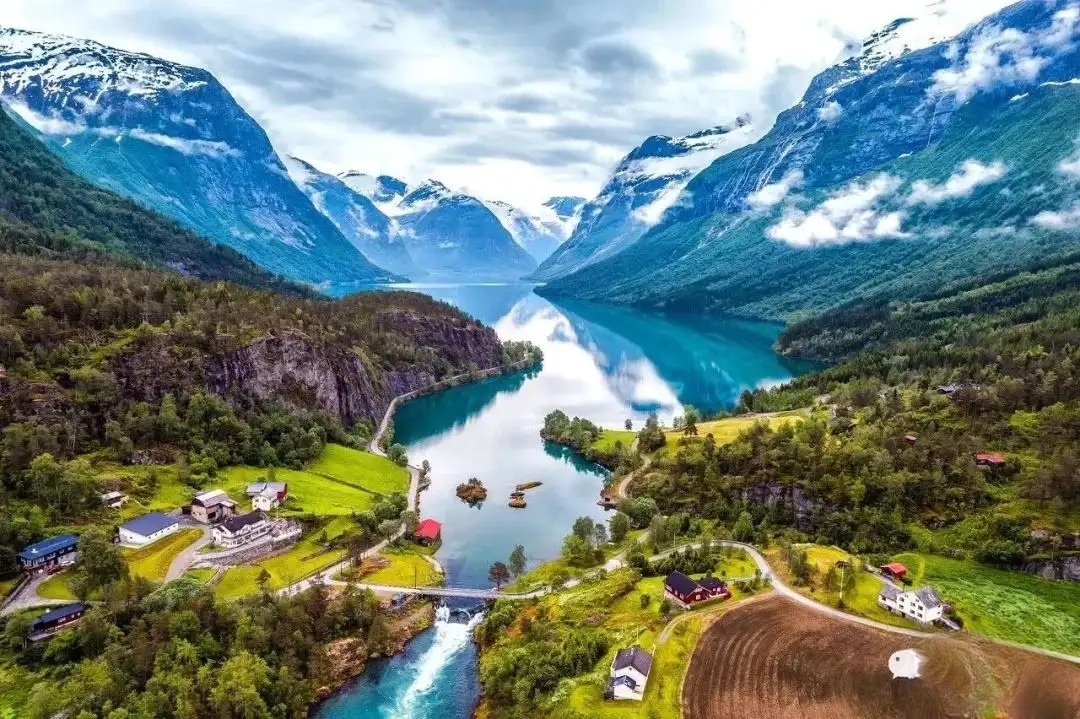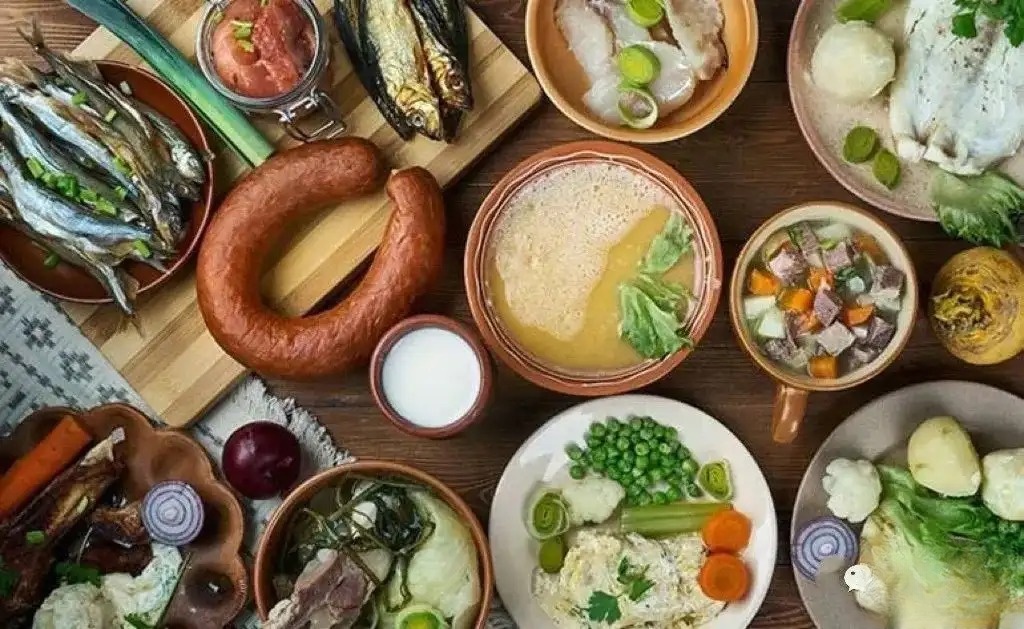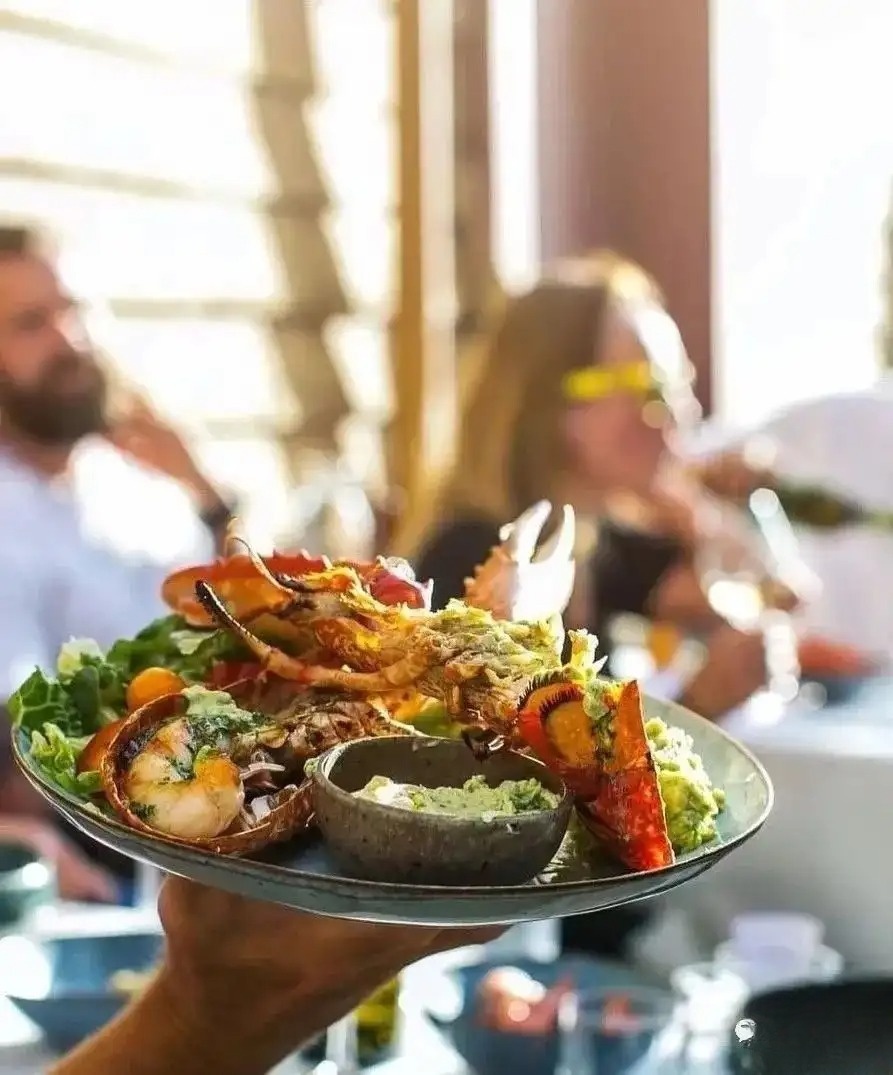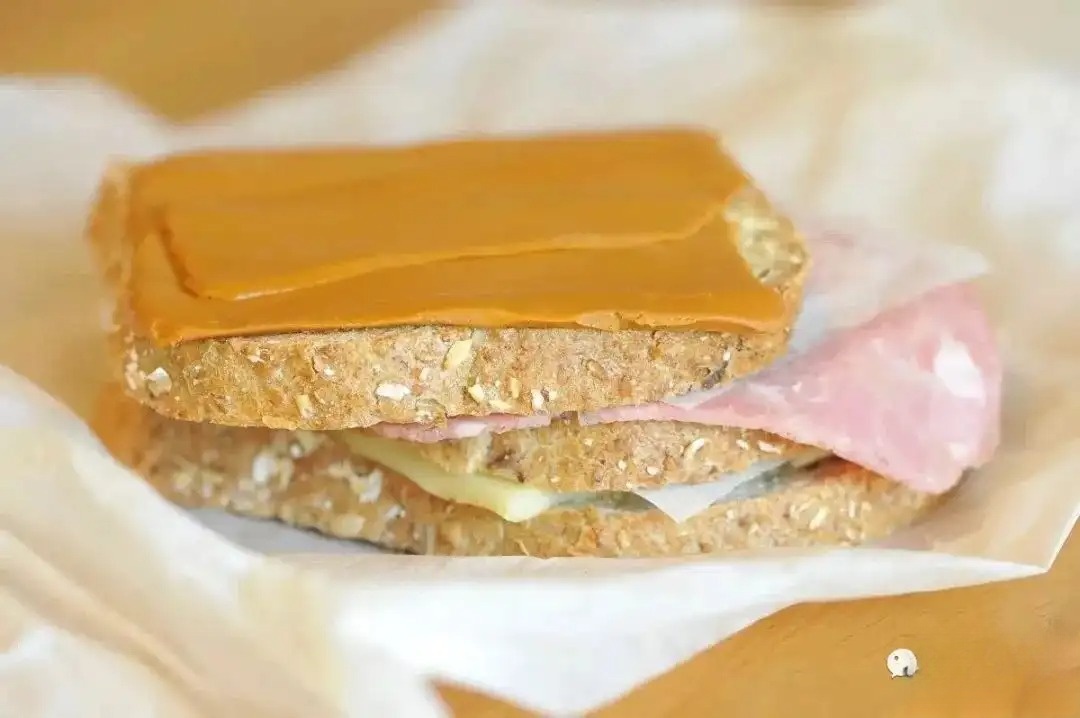Talk about Norwegian cuisine

Today, let's discuss the most beautiful country in Northern Europe—Norway. Located in the northwest of the Scandinavian Peninsula, Norway borders Sweden to the east, Finland and Russia to the northeast, Denmark to the south, and the Norwegian Sea to the west. It includes territories such as Svalbard (Spitsbergen), Bouvet Island (a Norwegian nature reserve), and Jan Mayen Island .

One-third of Norway lies within the Arctic Circle, earning it the nickname "Land of the Midnight Sun." Norway is also the only Scandinavian country bordering the Arctic Ocean, experiencing two months of perpetual daylight each summer, earning it the nickname "the kingdom where the sun never sets."

In today's fast-paced and stressful life, takeout and semi-finished products are rampant, and eating well has become a luxury. In order to resist this fast-food culture, Italian food columnist and social activist Carlo Petrini launched the Slow Food Movement in the 1980s . Adhering to the principles of Good, Clean and Fair , it encourages people to patiently enjoy carefully prepared food in a relaxed environment.

The slow-paced Norwegians are big fans of the slow food movement. They arrange a " slow food meal " lasting several hours at least once a week , cooking the fresh ingredients themselves and then leisurely enjoying the time with the delicious food.










1000g fish bones (flounder)
2 onions
3 carrots
1 green onion
2 laurel leaves
10 black peppercorns
Half a spoon of fennel
300ml white wine
B. Cream of fish soup1. Lightly sauté the chopped vegetables in vegetable oil, add the fish bones and white wine, simmer for 2 minutes, pour in water to cover the fish bones; cook for 15 minutes, skim off the foam; reduce heat and simmer for 20 minutes, avoiding boiling; remove and strain the broth when it is reduced to 1/3


Material:
400g low-gluten flour
150g sugar
4g baking powder
200g butter
2 eggs
Cinnamon powder to taste
A little lemon juice
A little powdered sugar
5 apples
practice:
1. Cut the butter into small pieces and soften it at room temperature
2. Add sugar and mix evenly with a spatula
3. Beat with a whisk at high speed for about 5 minutes. If the room temperature is low, you can add warm water.
4. After beating until fluffy, add the egg liquid in batches, beating it each time before adding the next batch
5. This is the butter and egg mixture after being beaten evenly
6. Sift low flour and baking powder into the butter mixture
7. Mix well and divide into two doughs, one with 2/3 weight and the other with 1/3 weight.
8. Roll out 2/3 of the dough and place it in a 10-inch heart-shaped mold.
9. Peel the apples and cut them into small pieces. Sprinkle lemon juice on them to prevent oxidation.
10. Put the apple pieces into the pie base and sprinkle with powdered sugar and cinnamon powder.
11. Roll the remaining 1/3 of the dough into long round strips.
12. Place the strips on the cake in an alternating pattern
13. Bake in a preheated oven at 175 degrees for 50 minutes
14. When the time is up, take it out and let it cool slightly
15. Easily demould the apple cake
Tips:
This cake is best eaten while warm and can be eaten with whipped cream or ice cream.

4. Waffle


5. Kvæfjordkake

Kvæfjordkake is Norway's national cake, known locally as verdens beste, meaning "the best cake in the world." This unique cake consists of two parts: a bottom layer of butter cake and an upper layer of meringue covered with almond slices. The cake filling is a mixture of custard and whipped cream, giving it a flavor and texture different from that of a cream cake.
Material:
A. Sponge Cake Base
56g unsalted butter (softened at room temperature)
48g granulated sugar
36g egg yolks (about 2)
2g vanilla extract
30g milk
3g baking powder
B. Meringue
60g protein
108g granulated sugar
20g almond slices
C. Chantilly Cream
鮮奶油 150g
7g powdered sugar
practice:
1. Apply some oil to the baking pan (you can also dip it in some cake batter), line it with baking paper, and make sure it fits snugly on the baking pan.
2. Sift the flour and baking powder first, and stir thoroughly after sifting so that the baking powder can be evenly distributed.
3. Mix the softened butter and sugar together and beat at medium speed for about 3 minutes until fluffy and white.
4. Add egg yolks in batches and mix well. Then add vanilla extract and mix well. 5. Pour in milk and mix thoroughly.
6. Add the sifted flour and baking powder, mix slowly at low speed, then use a spatula to cut and mix, the mixed batter will be a little thick
7. Fill the pan with batter, filling it up to the edge as much as possible while keeping it square. The batter is a bit sticky, so be patient and spread it out. The batter will be very thin, but don't worry, it will expand a little during baking.
8. In another bowl, pour in room temperature egg whites and beat at medium speed for one minute. Then add sugar in three batches, beating for 30 seconds each time. After all the sugar is added, beat at medium-high speed until smooth and firm peaks are formed. We beat for about six minutes, and finally beat at the lowest speed for half a minute.
9. Use a spatula to gently spread the meringue evenly over the batter and evenly spread almond slices on top.
10. Preheat oven to 170°C and bake for 40-45 minutes, or until the meringue is dry and light golden brown.
11. Remove from the oven and place on a rack to cool for 20 minutes before removing the baking pan. Do not remove the baking paper. Let it cool completely before removing the baking paper.
12. While waiting for cooling, you can whip the fresh cream filling first
13. After the cake has cooled, cover it with a piece of baking paper and turn the cake upside down, being careful not to break the meringue. Tear off the baking paper at the bottom of the cake, cover it with new baking paper, and then turn the cake over again.
14. Cut the cake in half, take one piece and place it meringue side down, then spread the cream on the sponge cake side and gently place the remaining half on top with the meringue side up, then cover with plastic wrap and refrigerate for at least an hour to allow the cream to set. Alternatively, you can refrigerate overnight for a better flavor.

6. Norwegian Sandkaker

Material:
80g butter
80 grams of sugar
1 egg
250g flour (regular or cake flour)
80g almonds
practice:
A. Cookie dough
1. Cut the butter into small pieces and let it soften naturally
2. Add 80 grams of sugar and beat with a whisk
3. Add the egg liquid little by little in several times , stirring evenly each time until the egg liquid and butter are completely blended
4. This is the state after adding the egg liquid
5. Sift in flour and almond powder (almond powder can be made by crushing almonds into powder)
6. Use a rubber spatula to mix well. If there is no dry powder , you can grab it into a ball.
7.Put in fresh-keeping bag
8. Pinch it into long strips and put it in the refrigerator to wake up for 12-24 hours . If time is tight, at least
9. On the second day, take out the long strips and divide them into 2 to 6 equal parts , about 20 grams each.
10. Brush a thin layer of cooking oil on the tower mold , take a small portion and put it into the mold, put some oil on your hands and press the dough into the mold, and do all the steps in sequence.
11. Use a small fork to poke some holes to prevent the bottom from bulging , but there will be small holes
12. Put it into the oven preheated to 180 degrees together with the mold , bake for about 18 minutes, put it on the rack to cool down and then demould it.

7. Norwegian Fishcakes

Catching and cooking fish cakes is an indispensable part of Norwegian food culture. Seafood and flour are mixed together to make fish cakes, which can also be called fish cakes. Locals like to do it themselves, so they are never vague about the ingredients. They are baked and eaten right away, just like cakes just out of the oven. The taste is super fragrant and this is the purest and ultimate taste of food.
8. Norwegian Meatballs Kjottkaker

Material:
A. Meatballs
180ml milk
15ml full-fat plain yogurt
3 slices of sourdough white bread
Remove the crispy part
15 ml vegetable oil
1 medium onion, chopped
5g allspice powder
1 gram of ginger powder
1 gram ground nutmeg
450g mutton filling
450g veal mince
1 large egg yolk
5 grams of coarse salt
1 gram black pepper
B. Gravy
1100 ml beef broth
80ml brandy
340g fresh cream
85g shredded Norwegian goat cheese
10g unsweetened cocoa powder
Mashed potatoes as needed
appropriate amount of kohlrabi
Instructions:
1. Prepare the meatballs. In a medium-sized bowl, combine the milk and yogurt. Press the bread into the pan until submerged. Let it sit for about 10 minutes until soaked.
2. Heat the oil in a medium-sized frying pan. Add the onion and sauté over medium heat for about 8 minutes until softened. Add the allspice, ginger, and nutmeg and sauté for another minute.
3. In a large bowl, combine the ground lamb and ground beef with the bread mixture, onion, and egg yolk. Sprinkle with salt and pepper and stir well. Shape into 80 round meatballs, approximately 15 grams each.
4. Preheat a baking sheet, grease the baking sheet, and bake the meatballs in batches over medium heat, turning them over until lightly toasted, about 5 minutes per batch. 5.
Make the gravy. In a large, deep pot, boil the beef broth over high heat for 10 minutes, leaving only 480 ml. Pour in the brandy and boil for another 2 minutes. Stir in the heavy cream, goat cheese, and cocoa powder, then simmer.
6. Add the roasted meatballs to the soup and simmer over low heat for about 10 minutes, stirring occasionally until the meatballs are cooked and the soup is slightly thickened. Serve with mashed potatoes and kohlrabi.

9. Tynnlefse, a Norwegian soft flatbread

Lefse is a local Norwegian soft pancake, typically made with wheat flour, potatoes, milk, and butter, but it's not limited to a single recipe. Tynnlefse, a Norwegian soft pancake, has a unique aroma thanks to the addition of brown sugar and cinnamon. When introducing lefse to outsiders, the phrase "a flatbread that can be wrapped around anything" is often used. They can be enjoyed on their own as a breakfast staple, or paired with jam, butter, honey, or even sausage or lutefisk. As the saying goes, "Everything can be lefse!"
Material:
500g wheat flour
2 potatoes
250ml milk
1 small piece of butter
A pinch of cinnamon powder
brown sugar
practice:
1. Prepare wheat flour, potatoes, milk, butter, cinnamon and brown sugar
2. Mix the ingredients, stir with warm water into flocs and then knead into dough
3. Apply butter, cover with plastic wrap and let it rest for 20 minutes
4. Take out the dough that has been rested, roll it into long strips, press it into small round cakes with tools, and brush a layer of butter on the surface of the round cakes.
5. Heat the pan, put the dough into it, and when the dough bulges out, you can take it out of the pan.

10. Norwegian Pancakes

Norwegian pancakes (Pannekake in Norwegian) are similar to our omelets, but the egg batter recipe is slightly different, resulting in a different texture. They're also eaten differently. Norwegians serve them with sugar, blueberries, or blueberry jam, often for weekend lunch or dinner. Our omelets, on the other hand, are typically served with side dishes, porridge, noodles, and more, and are primarily eaten for breakfast.





Norway's unique geographical location, where the cold Arctic waters meet the warm Gulf Stream, creates a waterscape with ideal currents and temperatures. A network of islands and fjords creates a long, narrow coastline. This exceptional location and natural environment create excellent conditions for farming high-quality salmon year-round.

Norway is also renowned for its smoked salmon, fresh cod, herring, and shrimp. Meats include lamb, veal, and beef, with moose and reindeer also common. Norwegian home cooking includes meatballs and lamb stew in the fall and partridge in the winter.
Mentioning the Norwegian forest always reminds people of the gloomy and cold world described by Haruki Murakami, but the Norwegian forest in summer is full of vitality and bright and romantic colors.

Ripe berries, golden and plump cloudberries, dark purple aronia berries, anthocyanin-laden blueberries and bright red strawberries. In autumn, the berries in the forest fall one after another, forming a "berry explosion". Berries sprout and grow from trees and bushes, and even in the cracks of the road. Their figures can be seen, layer upon layer, like a colorful carpet.

In addition to the common berries, there are actually many other berries, such as cranberries, red currants, black currants, Morello cherries, etc., which will pop up like mushrooms throughout August and September...

In summer and autumn, the Norwegian forests transform into a vast berry buffet, overflowing with fresh, unpolluted wild berries. Many Norwegians pride themselves on cooking with ingredients they've picked themselves, and simply heading out into the forest with a bamboo basket to pick them is a delightful leisure activity.